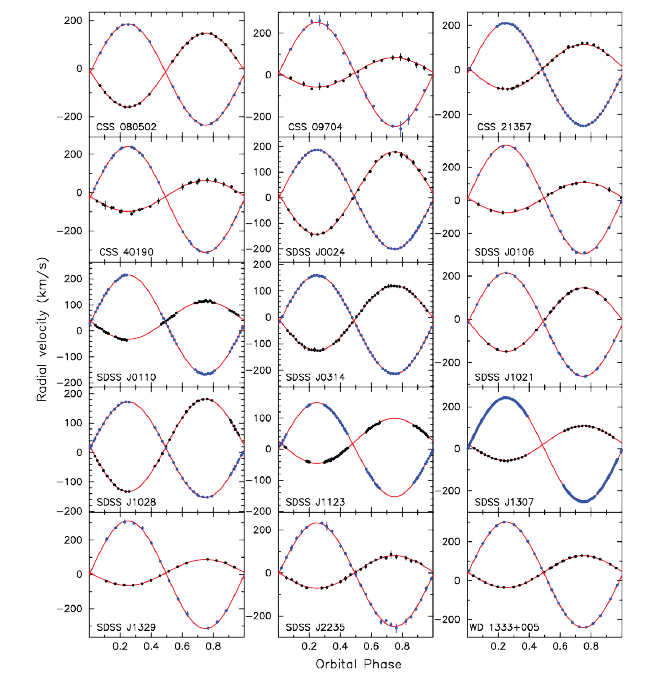PX158 - G2 - spectroscopic binaries
- most binaries cannot be spatially resolved
- however, in many cases, they can be resolved spectroscopically
- the two stars will have different emission spectra
- the velocity of the stars can be measured by the doppler shift of the lines
- assuming circular orbit:
- the doppler shift is given by:
where,
-
-
the inclination of the binary star orbit is given by
edge on face on
-
consider an observer is edge a binary system, ie:
, and star 1 is revolving about the centre of mass in the anticlockwise direction star 1 is closest to the observer and the velocity is perpendicular to the line of sight star 1 is moving away from the observer with maximum (positive) radial velocity star 1 is furthest from the observer and the velocity is perpendicular to the line of sight star 1 is moving towards the observer with minimum (negative) radial velocity

- for eclipsing binaries,
- as
, the amplitude will decrease given by - the motion of a binary star through the galaxy can be seen as a constant velocity (
)
- if
is unknown, - only a minimum mass can be obtained